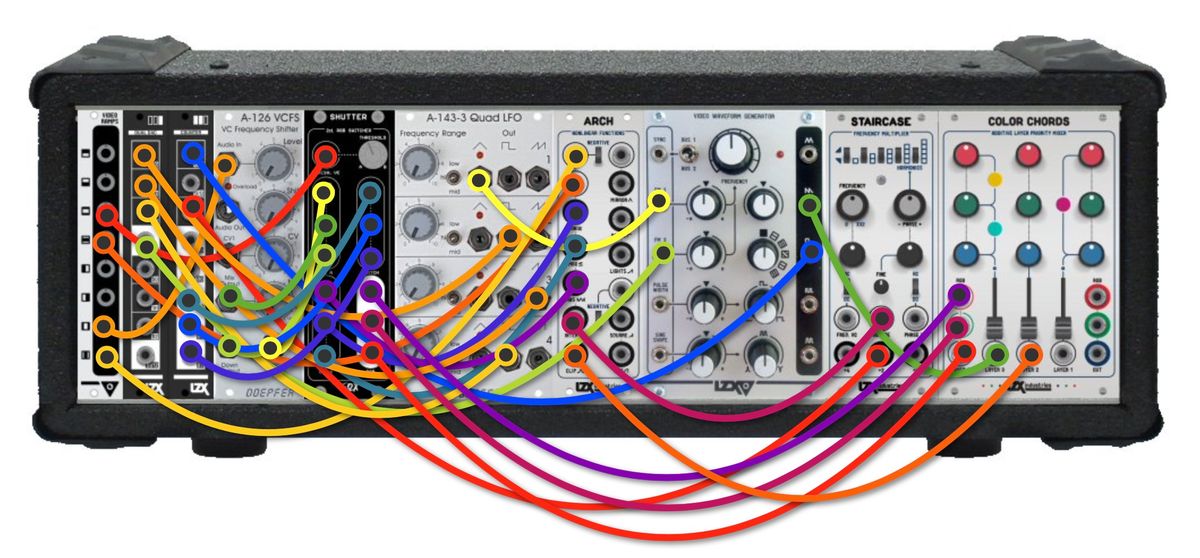Patch Breakdown: Rainbow Architecture

When working with video synthesis, there are a few common aesthetics that arise again and again. No judgement, it's just the nature of the tools. One of the ways that I try to push myself is to create compositions that use these same tools but produce an effect that isn't your normal solarization, colorization, interference glitch. I like this patch because it sits nicely between the worlds of video synthesis and non-video synthesis. Between cliché and something new.
There are a couple of key techniques in use in this patch. The first is using hard-edged logic shapes to control the switching between more organic shapes. The logic shapes in this case are generated by a LZX Castle Counter module going into the switch input of a Foxing Hour Shutter module. The rest of the Shutter inputs are populated with more loose, wavy blobs generated by the Doepfer A-126 Frequency Shifter and a LZX Ramps + LZX Arch c0mbo of combined analog shapes.
The overall effect in this patch is that the logic shapes provide the foundation visual and the moving/shifting organic shapes trigger colorization changes as they interact with the logic controlling the Shutter switch.
The second technique you'll notice in this patch is the "random" cutting modulation. This is not actually random at all. If you watch the patch for long enough, you'll see the rhythm to it. This is accomplished by feeding three square LFOs at different speeds into a LZX Castle Dual DAC module. The Dual DAC is a kind of fixed-weight mixer, where each input is mixed together at a specific level. When you feed three square LFOs into something like that, you will get an unsynced, drifting stepped modulation that can really make patches come alive.
This kind of technique is great if you are working with a fast, rhythmic soundtrack. Cuts will inevitably fall "on beat", in a wonderfully unintentional way. As someone that works with video but finds working in Final Cut or Premiere to be a bit of a drag, this is great for faking edits.
And lastly, the technique I use all of the time: Use all of the outputs. You can see in the patch diagram above, every one of the Arch outputs is used for something. Every one of the Frequency Shifter outputs is used for something. I'm using the LZX Video Waveform Generator to both clock the Counter and provide a layer of colorization in the LZX Color Chords.
This technique is fantastic for patch cohesion. Having multiple related outputs doing something different: generating an image, modulating a parameter, colorizing another shape means that you won't have weird sync issues or modulation drifting wildly out of control and you need to retune your oscillators mid-patch. Overuse of this technique can also lead to some boring, static patches with samey visuals, but if that is happening, that's your cue to switch up the attenuation, re-route the outputs to somewhere else, add more modulation, or feed an output into Arch's frequency doubler to get some more variation. In addition to that, when you make a big knob turn, everything stays relatedly in sync.